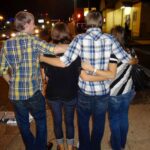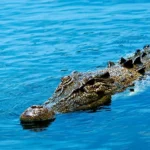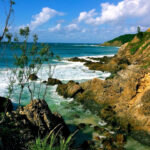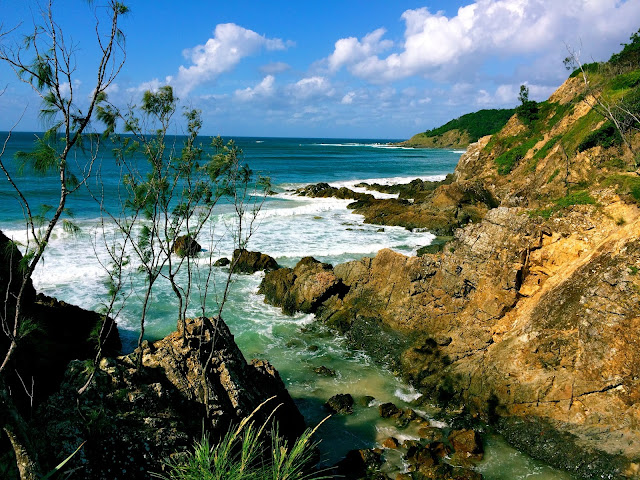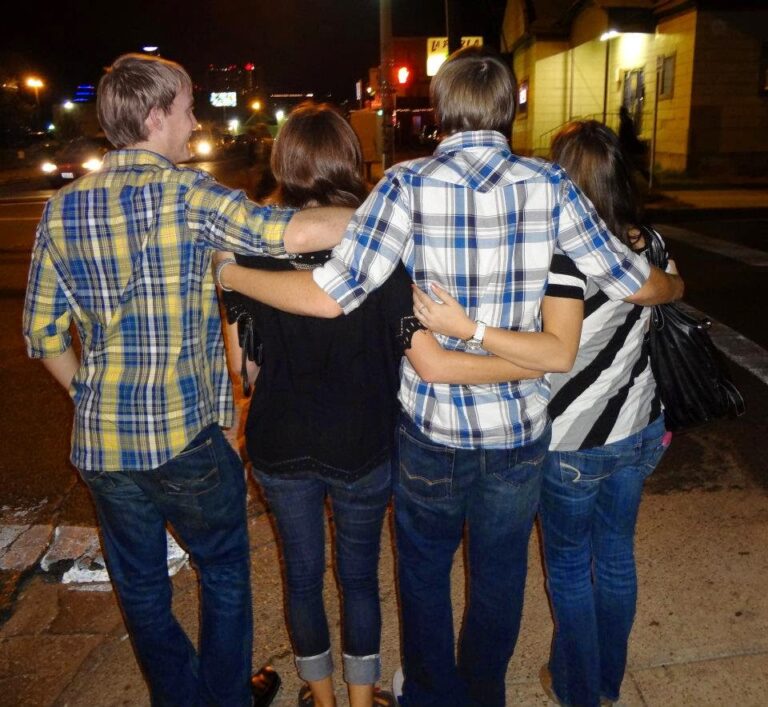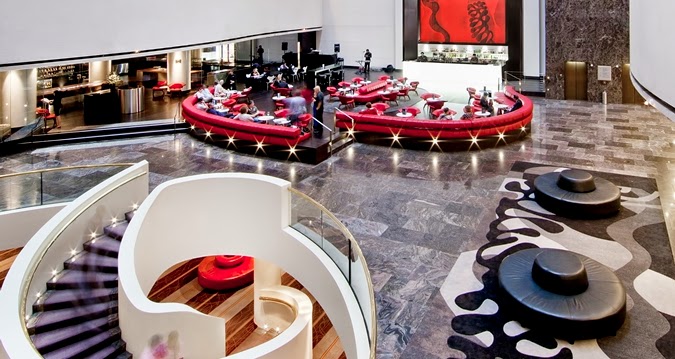In late April 2015 we
planned a rather impromptu early June trip to Northern Queensland and to the
Great Barrier Reef area. As the time for the departure approached, we
realized that the weather was most likely going to prevent any serious thoughts
about trips out to the Great Barrier Reef. As I was still recovering from
my broken arm and eventually had to undergo surgery in May, we decided not to
undertake any strenuous treks that might impede my healing progress. I
guess the Big Man was on our side in this thinking, as the intermittent rain,
the wind and the cooler weather (for this time of year) made our decision to
wait to fully explore this great reef a rather wise one.
Not to be daunted by this, we planned our first foray to Cairns, Port Douglas and the surrounding
vicinities as a scenic driving trip. It turned out to be a great idea, and a
very enjoyable adventure for the both of us.
In search of all things nature (including
crocodiles), we took our rental car to the far reaches of drivable roads in far
Northern Queenslands. The offroads experiences were incredible!!!!
 |
| Photo from Great Tropical Drive website- Captain Cook Highway |
{For more details on the above photo and the information depicted below, please see: www.greattropicaldrive.com.au}
 |
| The routes we undertook in the Cairns Area |
 |
| Cairns Welcome Sign as you enter the airport from the plane! |
I wanted to know how they determine the actual crocodile population of a region, how
they are tracked, and where the most dangerous spots are when we are traveling. Most
of this is out of sheer fascination with this reptile, but in the interest of self-preservation,
I sincerely want to know how to avoid any potentially dangerous encounters, since we
frequently traverse the ‘roads less traveled’ in our little outback treks. Click here for a fun and informative little Crocodile Safety Rap I found when researching!
his crocodilian escapades prior to this death. I was always in admiration of his tireless
work to help the world better understand this large predator. After research, I am even
more proud of his efforts, which included many legal documents supporting his ambitious
goals for outreach, research and protective measures.
 |
| Young Steve Irwin in the wild |
To prove he was dedicated to this cause for a long time, I am posting this photo of him as a very young man working in the wild with animals. I’ve found much to admire in this type of dedication to the animal kingdom, and I’ll always be a fan of his, and of the Australia Zoo, near Brisbane, which he built on the premise of sharing this love of ‘all things wild’.
I wish I could post his tracking mechanisms and MOU details, but it takes one off of the rationale for the blog – to provide travel insights and commentaries. If interested, there are plenty of links to take you to these wonderful plans he had in place.
Now back to the blog…
We did feel that if we went off the beaten path and took hiking explorations, we indeed needed to be crocodile wise, and understand the risks. So I studied. Again. And I learned that there has been a recent implementation of a new crocodile management policy that started with
the development of Crocodile Management Plans (CMPs) for the Cairns,
Townsville, Hinchinbrook and Cassowary Coast local government areas. These areas have more prevalent crocodile sightings, and thus we would have more cause for concern, given their risk factors. Categorizing the risks seems like a good thing to me!
- Zone 1: ZERO TOLERANCE ZONE- The objective is to prevent crocodiles from entering the zone and remove all crocodiles that enter into it. Physical barriers (weirs, rock walls) are required between the zone and any known populations of saltwater crocodiles. These zones may only be in place for part of the year (for example the dry season, which is also the breeding season, from July to September). Management approaches are to reduce the risk of crocodile attacks but they can never guarantee 100% safety in natural waters.
- Zone 2: INTENSIVE PATROL AREA: The objective is to remove all crocodiles two metres or
greater in length or any crocodile displaying aggressive behaviour once a
sighting is confirmed. Zone 2 relegation means crocodiles that pose a threat to the community ‘through their
size of behaviour’ will be removed by officers from the Department of
Environment and Heritage protection.
- Zone 3: WATCH AND WAIT: The objective is to remove crocodiles of concern. This means a croc has to display ‘threatening behaviour’ before it is targeted for removal.
Most of where we trekked was listed in Zone 1 or Zone 2. Interestingly enough, the last fatal croc attack in Queensland was in 2009 on the Daintree
River, which was only (per my sources) the seventh death recorded since 1985. Still, we exercised caution, but continued to traverse areas of interest to our longtime anti-tourist travel mantra – which is:
“to experience every aspect of the local food and culture, and to explore the native flora and fauna off the beaten path from the regular tourist sites and frequented habitats”
Next stop on our scenic drive…
 |
| AP photo- croc surfing! |
But as locals say, you just have to exercise reasonable caution. Now I’m not at all sure what ‘reasonable’ means to them, but to me in this instance it means pretty much stay on the beaten path we’ve chosen because we’re already off the beaten path, which in some cases is off of a 4WD trail. But we really didn’t have to worry about oceanic attacks or even other close encounters, as this was winter, and we were not heading out in any body of water ANY time soon!
Despite the rather wintry looking weather and clouds, the area was still quite beautiful, quite croc-free, and the palms along the water were lovely.
 |
| Palm Cove- photo from a local camping website |
Enough sun and surf for now… heading for Daintree Rainforest – Next stop on the Z tour…
 |
| Some of our stops along the way on the Daintree hiking paths |
Daintree National Park: (~62 mi northwest of Cairns):
 |
| Daintree National Park- a great walk among the trees! |
 |
| Daintree view from one of the lower bridges! |
On to Mossman Gorge… 3rd stop on our nature tour…
Mossman Gorge: (~75 mi NW of Cairns):
 |
| A picturesque Mossman Gorge brook |
We really enjoyed the hike through this area, and the scenery was quite breathtaking at certain spots. Since this is not the height of the tourist season, it was a nice quiet meander with just a few small school groups on holiday. If I were a better scientist I could probably tell you all about the incredible varieties of plant species. But I’m not. So the photos will have to do. A Biologist could also spend a lifetime here! Some of them probably do!
 |
|
| Mossman Gorge swinging bridge |
A great stopping place, but anyone traveling here (and any of the rainforest areas) should definitely remember to pack the following items:
- Plenty of insect repellent
- Hat and Sunscreen
- Umbrella/Poncho (rain often happens!)
Time for a food discussion…and a lunch break |
 |
| The yummy Creme Brulee was found in Port Douglas! |
we search for eateries about as often and as diligently as an expectant mom searches for bathrooms on
road trips!
holiday weekend. When we stopped in
Mossman for petrol and a much-needed potty break (for me), we could not find
anything open! Finally, we spotted this hilarious looking life size topless dummy in a colorful skirt on a balcony,
which we thought was a real-live prostitute at first. Just
below and around the corner was this tiny sorta hole-in-the-wall café called “Temptations”. Yep!
You guessed it! It was a sure sign to us, and we looked at each other
and said “LET’s!!!”
anyone who hasn’t yet guessed it, that is our travel battle cry, which means ‘Let’s do it, baby!’
The ferry crossing into far Northeast Australia…
Driving through endless rows of sugar cane around Mossman and on to the
Daintree ferry (near Cape
Tribulation), we enjoyed the challenging roads and ever changing scenery. We had a slight downpour while we were driving, which added a new dimension to the excitement of traversing around on some precarious curves, but being from the states, and having driven up (and down) Ouray 550 -Colorado’s Million Dollar Highway- we were up for any of the challenges presented to us! (Ouray 550 is definitely not for the faint of heart- no guardrails and sheer cliff drop offs!)
A quick word about the endless sugar cane fields we passed through…
Sugar cane is highly culturally significant to this
continent’s settlement. For much of the past two million years, there was a land
bridge that connected Cape York Peninsula and Papua New Guinea. Papua New Guinea was a major exporter of sugar cane, but I don’t think the initial crops grown in Australia were sourced from there. I’m certain the exchange of knowledge of the crop probably was, most likely from the laborers brought in from there. However, as a result of the land bridge,
the forests and woodlands of Cape York have very strong biological links to
those of Papua New Guinea. This close connection has been manifested
through the sharing of species (such as tree
kangaroos). It has also created the peoples known as Torres Strait
Islanders who, with the Injinoo Aboriginal people, populate most of the
northern coastal reaches of the continent.
History of the world economy itself would be dramatically
different without the presence of sugarcane. This wonderful plant forged the basis of many advances in modern cuisine, and in particular, forged my love affair with the incredible desserts and foods we have today. With
its amazing ability to create and store sucrose in large quantities,
sugarcane soon became the
world’s largest cultivated crop, which it still is today.
I won’t get too far into the slave labor sought to cultivate and harvest this crop in Australia but I will provide a few facts, as human rights interests are always foremost in my heart. An estimated 62,500 Islanders were brought to Queensland between 1863
and 1904. Almost all of them hailed from Melanesia – Vanuatu, the
Solomon Islands and the New Hebrides. A small number of labourers came
from the Polynesian and Micronesian islands such as Samoa, Kiribati and
Tuvalu. Many Islanders came voluntarily, but some were brought over
illegally, having been kidnapped, like the African slaves in the US in the 1700’s and 1800’s. It’s a sad fact of history that man resolutely felt he had the right to enslave other men, but unfortunately it happened. Now, thank God, there are many modern tools to help cultivate and mass-produce this wonderful crop. So thank the Good Lord again that I don’t have to boycott sugar. The world would be a much unhappier place without this fantastic crop! And I would be a much unhappier person. Think of all the yummy creme brulee I would miss out on!
way to the end, but I did, and a very patient Mark drove around the curves and
tiny roads to get me there. I’m posting some interesting photos of cars
at the end of the road. We spotted this car and also saw it on the way
out, later in the evening. Love the message on the door!
 |
| Interesting parked car – near the road! Read the message on the car |
 |
| Wrecked car near 4WD point! We think this was a warning for non-believers! |
The end of the road for us, literally!
Cooktown to the northernmost tip of Queensland, Australia is some of the
most spectacular scenery in this country, and one of the
world’s last untamed wilderness regions. The area features literally
thousands of species of colorful and exotic birds, pristine waterfalls and
the allure of crocodiles lurking nears watering holes where they can bask in the sun
relatively free of offending tourists.
 |
| Map of the area |
Unfortunately, the lack of paved or managed roads makes this trek allowable only to registered 4WD vehicles.
 |
| 4WD travel only on these roads! There are hired outfits that will take you! |
When we visit Cooktown next to attempt this 4WD, we have been told that it is a must to visit the very interesting local
cemetery there. We’re big on history, so cemeteries are fascinating places to visit, and learn how people lived- and died – centuries ago.
There is an abundance of local folklore about the mysteries of the ‘untamed wilderness’ and the coastal area off of the northernmost tip. There have been more than 100 shipwrecks off of the coast of Cape York, including the mysterious
disappearance of a French naval vessel.
Some of the folklore surround the heroic but sad story of a very young pioneer wife (Mary Watson), and the still fairly baffling tale of the half-Aboriginal/half Scandinavian woman who lived with Aboriginals at Normanby River in the 1880’s. She was at least 60 years of age when found, and it is still a mystery to this day as to her origin of birth, birth parents, and her upbringing under a local Aboriginal tribe.
Unfortunately, she was accidentally killed on a failed rescue attempt by the Aboriginals, after the locals discovered her, kidnapped her, and tried to bring her back to civilization- away from the Aboriginals with whom she was raised.
There are also many mysterious tales of missing people, including the 2007 case of a father and young son who headed out in the family dinghy to check their shark net off the
mouth of the Coleman River. They never returned, and the mystery continues to this day as to what happened, although two locals were eventually charged with murder in their disappearance.
Final stop: Port Douglas!
The setting in Port Douglas is somewhat equivalent
to driving into the heart of Key West in the U.S. Florida Keys, with the tiny exception of having mountains in the background. The
first propitious glimpses of this exquisite port town are through a beautiful avenue of
palm trees, into a rich shopping district area that spared little
expense to set a tropical paradise encounter for the tourists.
It’s
a very romantic little port town, and the eateries and pubs are
prevalent on every street corner and in between. There are beautiful
hotels and B&Bs that offer every ambiance WOW
factor you would want to have- large restaurant balconies for drinks
and appetizers, beautiful hotels overlooking the water and the
busy streets… not to mention the highly romantic lighting at night. We did not
make our accommodations here this night, but we will definitely make
this a priority for our next trip. The treks out to the Barrier Reef
are easy from this vantage point.
glass of wine on our balcony, and a wake-up call by the sun, with this view the
next morning:
 |
| Morning view from our balcony |
 |
| The mountains across the bay – far to our right (stormy in this direction) |
 |
| Mud flats at low tide – just around the corner of our hotel |
trek out to the Great Barrier Reef! Can’t wait to see all of the
wonderous sights offshore, now that we have explored the scenic shoreline and
the pristinely beautiful NE Australia wilderness.
 |
| The Prostitute! |










